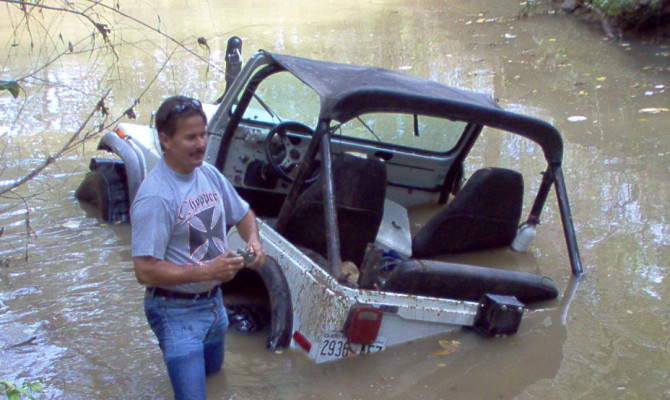“Think about that water entering areas of your truck, believe me, you would prefer it did not do so!”
Spring-like weather means the back woods trails are already beckoning us out here in the West.
While my Driveway colleagues seem to have spent the last month ploughing through snow and ice back East, I’m raring to get out there in our beautiful back yard.
However, there are a few things to think about before you head out into the back roads of British Columbia this spring, to find yourself driving through those swollen creeks and rivers.
Think about that water entering areas of your truck, believe me, you would prefer it did not do so! – Your truck’s transmission, transfer case, and front and rear differentials must be vented to compensate for changes in air pressure as temperatures go up and down when you drive, but when you are driving off road in wet conditions the most likely place for water to enter is through those vents.
Water that gets in contaminates the lubricants that protect parts, and that can lead to bearing and gear damage. To keep water from getting into areas where it should not be is fairly easy. Attach a rubber hose, or vacuum hose to each vent, and then extend it to a high location on the truck. The length of tubing required will depend on your vehicle, but 30 – 35 centimetres should be enough.
Before you begin, locate the vent on each component. Determine if each vent is a tube or a cap style. If it is a tube style make sure that the hose fits tight and secure it with a small hose clamp, leaving excess hose length to route upwards. Cap type vents are usually screwed in mushroom shaped. Remove the cap from each one by unscrewing it. Use this for a sample and buy a nipple vent with the same thread size and replace the cap with the nipple.
The new vacuum hose for the transmission and transfer case vents can be secured along the frame or body to the firewall with plastic tie straps (do not over tighten and pinch the hose) and from there up into the engine compartment. Make sure to secure the end. Leave about 8 centimetres and bend it downward.
The front differential hose is to be routed in a similar fashion but allow enough slack for axle movement. The same goes for the rear differential but instead of running it to the front, direct it up between the bed and the cab of the truck. When you have finished, check the tubing to make sure it is free of kinks and positioned away from hot exhaust or engine parts.
Now you are ready to go through creeks and mud holes with very little chance of water to enter the vents. Water can still enter components through other routes, so be sure to check the color of your differential and transmission fluid after each trip. Axle grease turns a light brown color when mixed with water. Automatic transmission fluid turns pink when mixed with water.
Most manufacturers recommend you check the wheel bearings if you have been in water deeper than the hubs. Re-pack the wheel bearings if there is any sign of water entry.
Recent Comments
- { Enjoyed your Forest of Bowland in the BMW X5M, particularly the photo of the BMW in front of the main part of Stonyhurst College where... }
- { Bantam designed the Jeep, not Willy's or Ford. The American military gave the original Bantam prototype to Willys and Ford to copy. There is plenty... }
- { All Escalades come with a 6.2-lilter V8 engine that produces 420 horsepower. A six-speed automatic is the only transmission offered and drives the rear wheels.... }
- { Alexandra is an excellent journalist. }
Popular Posts
- Journey to a ‘Sparkling’ Luxury Okanagan Resort “Four lucky readers will put a Dodge Journey’s weekend-...
- The Need For Speed: Hike Those Highway Limits More than half of those polled believe the province sho...
- Drives-U-Crazy… Erratic drivers. An early morning drive from Kelowna to Vancouver is nor...
- Readers Respond: The Pros and Cons of Increasing B.C. Speed Limits Increasing the speed limits will only increase risk to...
- Honda CR-V Review: The Compact Crossover To Get Things Done The CRV is a very stylish and aerodynamic crossover veh...







